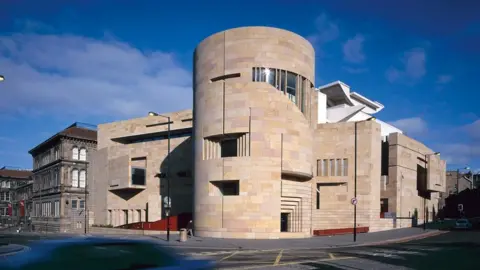Declaration of Arbroath: Historic document to go on show
 PA Media
PA MediaThe Declaration of Arbroath is set to go on display this summer- for the first time in 18 years.
The 700-year-old document will be on show at the National Museum of Scotland from 3 June until 2 July.
It can only be shown occasionally to ensure its preservation and was last displayed almost two decades ago.
The declaration is a letter which was sent from Scottish nobles to the Pope, asking him to acknowledge Scottish Independence.
It was written amid pressure from Pope John XXII, who refused to recognise King Robert I as monarch. The plea was unsuccessful as the Pope's reply urged reconciliation with the English.
The display has been organised in partnership between National Museums Scotland and National Records of Scotland, who are custodians of the document.
What is The Declaration of Arbroath?
It is a letter dated 6 April 1320, thought to have been written at Arbroath Abbey, by the barons and freeholders of Scotland, on behalf of the Kingdom of Scotland. It was written to Pope John XXII asking him to recognise Scotland's independence and acknowledge Robert the Bruce as the country's lawful king.
Viewed by some as one of the most famous documents in Scottish history, the charter reads: "It is in truth not for glory, nor riches, nor honours that we are fighting, but for freedom, for that alone, which no honest man gives up but with life itself."
 National Museum of Scotland
National Museum of ScotlandAlice Blackwell, senior curator of Medieval Archaeology and History at National Museums Scotland, said: "It is a hugely significant document and a vital piece of Scotland's history.
"We look forward to welcoming many visitors to enjoy the rare opportunity of seeing this iconic document close up."
Culture Secretary Angus Robertson said the declaration was of "great historic and cultural interest" to Scots, and those of Scottish descent living worldwide.
